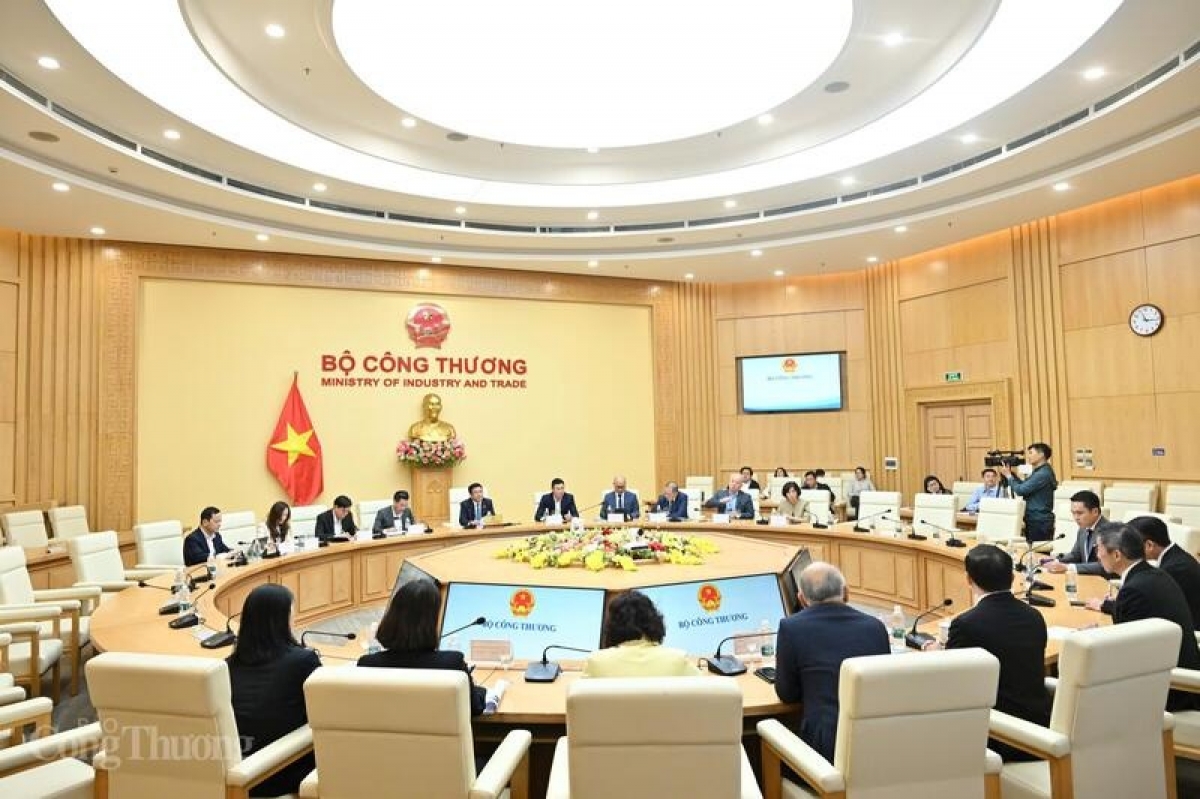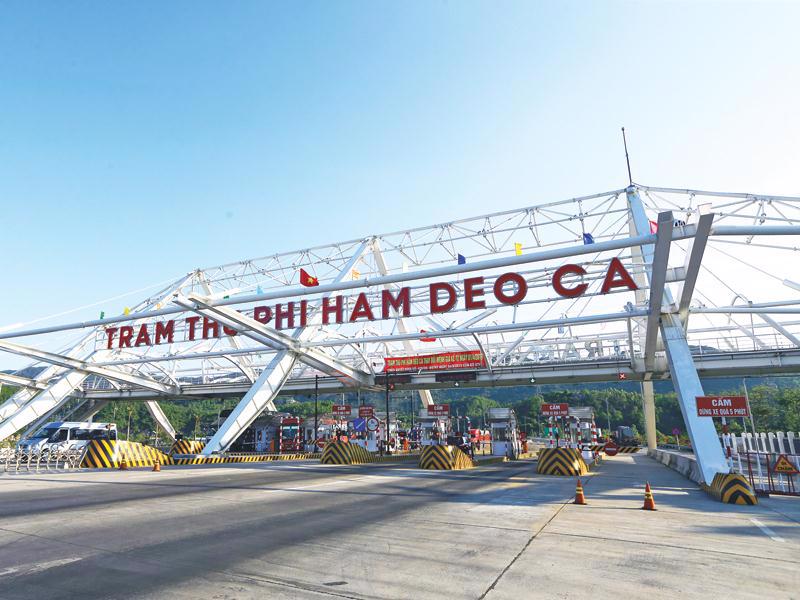INTERNATIONAL INVESTMENT
AND PORTAL
Discussions surrounding the potential merger of administrative units in Vietnam have triggered a surge of interest and price hikes in various real estate markets.
On April 12, the issued Resolution No.60/NQ-TW outlined a significant restructuring of the country’s administrative boundaries, with the Party agreeing to a plan that will merge localities, reducing the number of provincial-level administrative units to 34.
Among the sectors expected to feel the impact, real estate is particularly sensitive to shifts in policy and planning, and the market is already reacting.
Nguyen Van Dinh, chairman of the Vietnam Association of Realtors (VARS), noted that the planned merger of provinces and cities is likely to have a positive impact on the real estate market.
“The move could streamline certain legal procedures related to project development, thereby increasing housing supply – particularly in the affordable segment – and offering more reasonable options for homebuyers,” Dinh said.
He noted that historically, every time new zoning or planning information is released, land prices in the affected areas tend to spike sharply in the short term.
However, Dinh emphasised that for real estate values to rise sustainably, growth must be grounded in solid fundamentals, namely, comprehensive development in transport infrastructure and socioeconomic conditions.
“If prices rise purely on speculative news about infrastructure or planning without real implementation, investors face significant risks of capital being locked or losses incurred,” he said.
A report from the VARS revealed that just weeks after proposals for provincial mergers were made public, land prices in several localities surged, some areas witnessing increases of up to 30 per cent in March alone.
However, actual transaction volumes only rose significantly in provinces expected to become merger hubs, where real estate prices remain relatively affordable.
According to DKRA Group, in March, land prices experienced localised spikes in a few regions.
For instance, prices in Nhon Trach district of the southern province of in Dong Nai jumped by 30–50 per cent, while Phu My and Chau Duc areas in the neighbouring province of Ba Ria–Vung Tau saw increases of 20–30 per cent. In contrast, most southern provinces recorded more modest growth, averaging around 6–8 per cent.
DKRA noted that these localised price hikes were largely driven by speculation following the news of potential provincial mergers.
An Gia Group in March launched 3,000 apartments at The Gio Riverside venture near the Hanoi Highway of Ho Chi Minh City, while Kim Oanh Group on March 14 introduce its 26-hectare K-Home New City project in Binh Duong province, which includes over 3,300 housing units, mostly dedicated to social housing.
Meanwhile, Long An province, another southern satellite city of Ho Chi Minh City, is witnessing strong momentum with large-scale developments underway.
Notably, Vingroup at the end of March began construction on Vinhomes Green City, its first integrated township project in Long An. Spanning 197ha in Duc Hoa district, the project occupies a strategic location, linking Ho Chi Minh City with the rapidly urbanising and industrialising Mekong Delta.
Vietnam’s housing supply is expected to recover significantly in the near term, aided by policy adjustments aimed at improving transparency and expediting project approvals. While Hanoi and Ho Chi Minh City remain key markets, investors are increasingly shifting their focus to satellite areas, where demand is gaining momentum on the back of merger-related expectations.
According to Tran Dat Khanh, CEO of real estate data platform Biggee, the market may see short-term price hikes fuelled by investor sentiment and hopes for favourable zoning changes. However, long-term property values will depend on finalised planning and infrastructure investments.
“Areas with clear development strategies and strong infrastructure investment will enjoy sustainable growth,” Khanh said. “By contrast, regions lacking strategic advantages or connectivity may struggle to pull in capital,” he added.
 Real estate heats up ahead of provincial merger plans, illustration photo
Real estate heats up ahead of provincial merger plans, illustration photo
Assoc. Prof Tran Dinh Thien, former director Vietnam Institute of Economics
The consolidation of administrative units and the reclassification of urban areas represent not only an organisational restructuring effort, but also a strategic opportunity to generate new growth momentum for localities.
If implemented with the right legal foundations and clear direction, the merger of provinces and cities can do more than merely aggregate, they can synergise the fragmented strengths of smaller localities. Once effectively connected and well-organised, these localities have the potential to create combined economic power that exceeds the sum of their parts.
For instance, if Ho Chi Minh City, Vietnam’s largest economic hub, can be effectively linked with Binh Duong, a city aiming to become a global smart urban centre, and Ba Ria-Vung Tau, a key international maritime gateway, alongside Can Gio, which plays a crucial role in water resources and ecological balance, the result would be a highly promising regional development cluster.
This is how sustainable growth drivers can be built, not by simply piecing together fragmented regions, but by strategically harnessing their collective strengths.
Dao Quoc Viet, representative Real Estate Review Commune
For investors, the prospect of administrative mergers presents new profit margins, but it also demands a more prudent and strategic approach.
The announcement of potential mergers has quickly drawn widespread attention from investors across the country, especially toward provinces under consideration. Take Binh Duong as an example: the absorption rate for new projects in early 2025 reached 90 per cent, with notable participation from investors in northern Vietnam. Clearly, expectations of a price surge have prompted many to commit capital early.
The opportunities are significant. Now, with the added narrative of urban expansion, investors who select quality projects in strategic locations with strong infrastructure connectivity, such as proximity to Ho Chi Minh City or major transport routes, can expect long-term, sustainable value growth as the new city takes shape.
Notably, institutional and foreign investors may view the merger as a signal to expand their portfolios in provinces neighbouring Ho Chi Minh City which offers larger land banks than Ho Chi Minh City but remains part of the same mega-urban market.
However, the key challenge for investors is to distinguish between genuine opportunities and speculative bubbles. As noted, not every asset will rise in value simply because of a merger. Short-term speculators may face significant risks if the merger process slows or if urban planning falls short of expectations. Instead of chasing hype, investors are advised to focus on fundamental factors: location, legal transparency, project quality, and real-world utility potential.
Given this context, a diversified portfolio strategy, combining rental assets with long-term capital gain prospects, could be a safer path for investors aiming to capitalise on the merger trend in a sustainable way.
Giang Huynh, director of Research Savills Ho Chi Minh City
For the short-term impacts, the proposed provincial mergers are unlikely to directly affect the real estate market’s supply-demand balance in the near term. Both supply and demand levels remain relatively stable. The immediate impact is largely psychological, driven by investor optimism that newly merged areas will benefit from increased attention and development.
Over the long haul, mergers could have positive effects on the market. Once integrated urban planning and infrastructure development are put in place, new land reserves may become available, helping to unlock additional housing supply, particularly in the affordable segment. This could be a meaningful step toward easing the chronic housing shortage in Ho Chi Minh City.
I advised that investors should not make speculative decisions based solely on expectations surrounding the mergers. Instead, investment choices should be guided by fundamental factors such as location, project potential, and actual market demand. Mergers may provide a psychological boost, but they should not be the primary rationale for investment.
While the administrative mergers could help improve long-term housing supply, especially in the affordable segment, the short-term impacts will be mostly sentiment-driven. Investors are urged to remain grounded in market fundamentals rather than react to hype or unconfirmed expectations.
 Real estate investors must analyse every factor
Real estate investors must analyse every factor
Recent discussions surrounding provincial mergers have drawn significant public and investor attention, particularly within the real estate sector.
 Hopes endure for real estate optimism
Hopes endure for real estate optimism
There had been heightened optimism among investors when it comes to Vietnam’s real estate sector this year – but a spanner now may be in the works in the form of new and heavy US tariffs.
 Uncertainty weighing on real estate
Uncertainty weighing on real estate
The ever-changing status of the global economy following last week’s tariff shocks continue to loom large among investors in Vietnam’s real estate market.
By Bich Ngoc



















